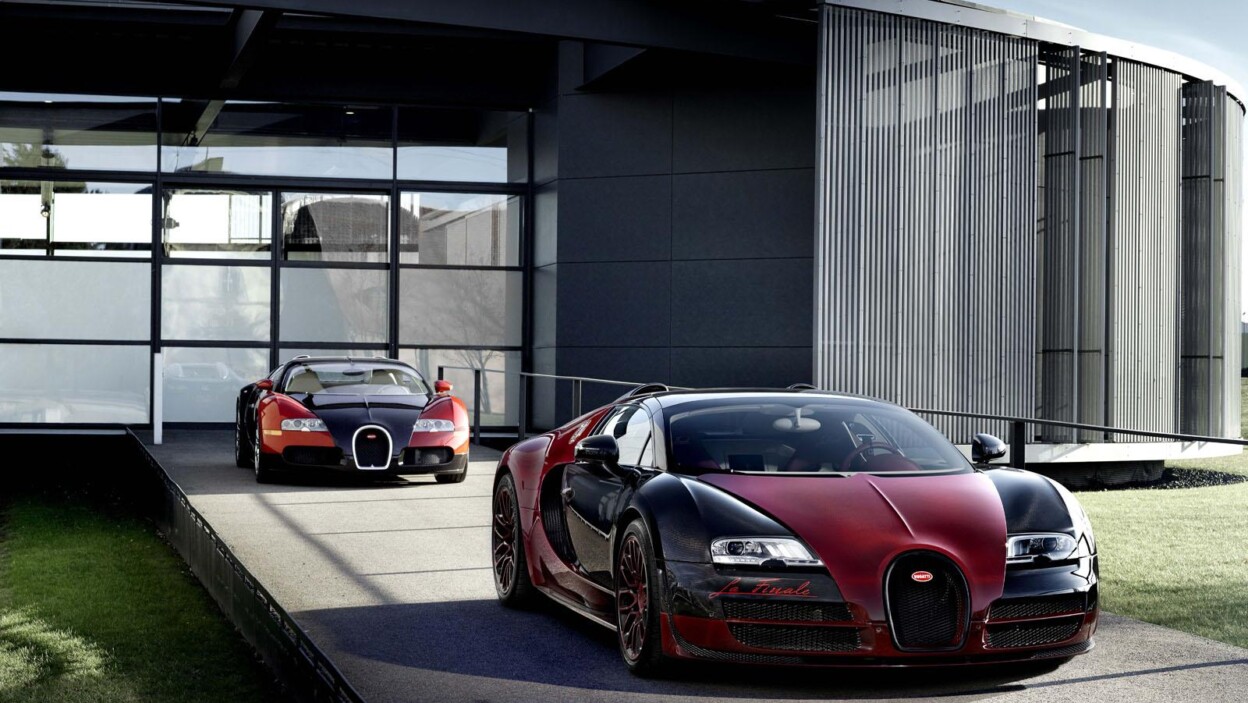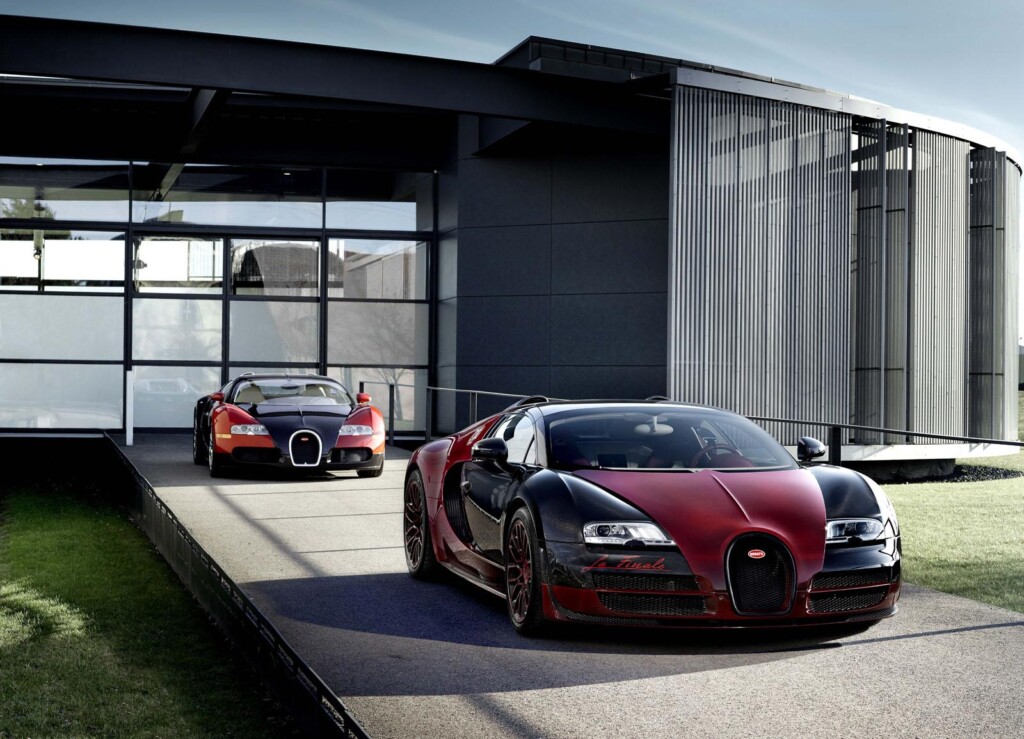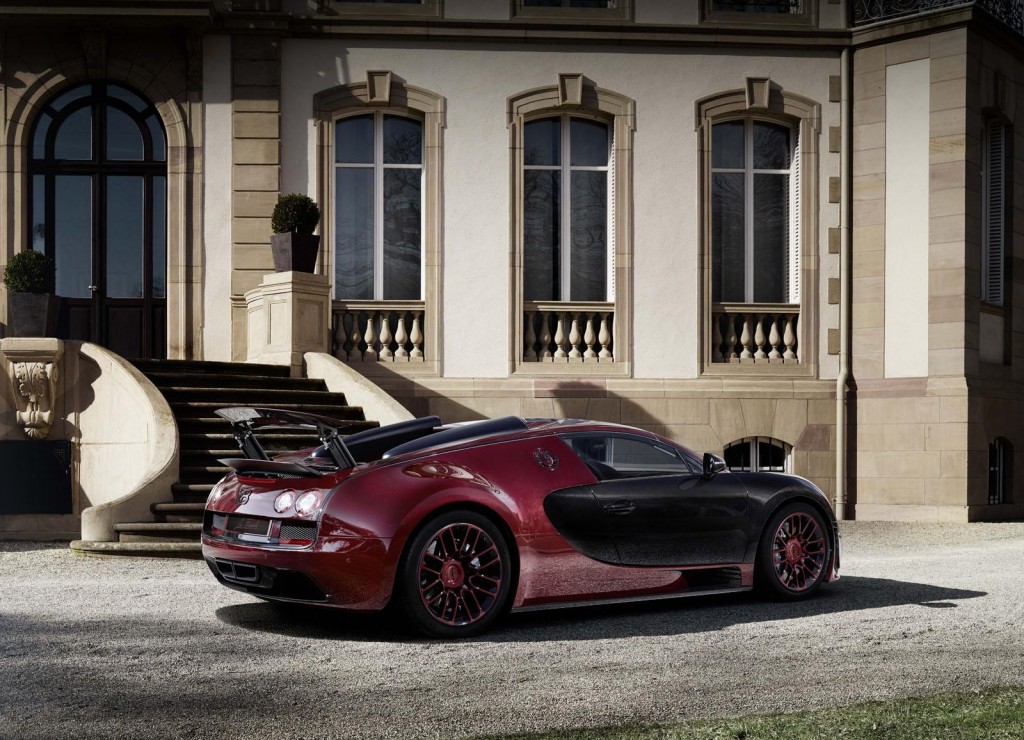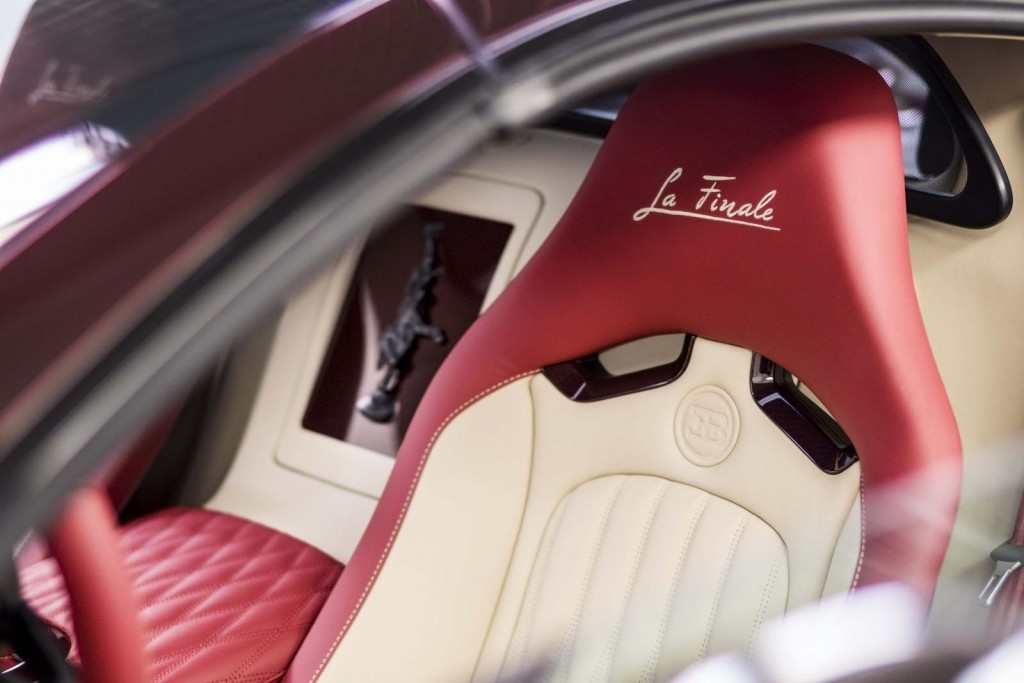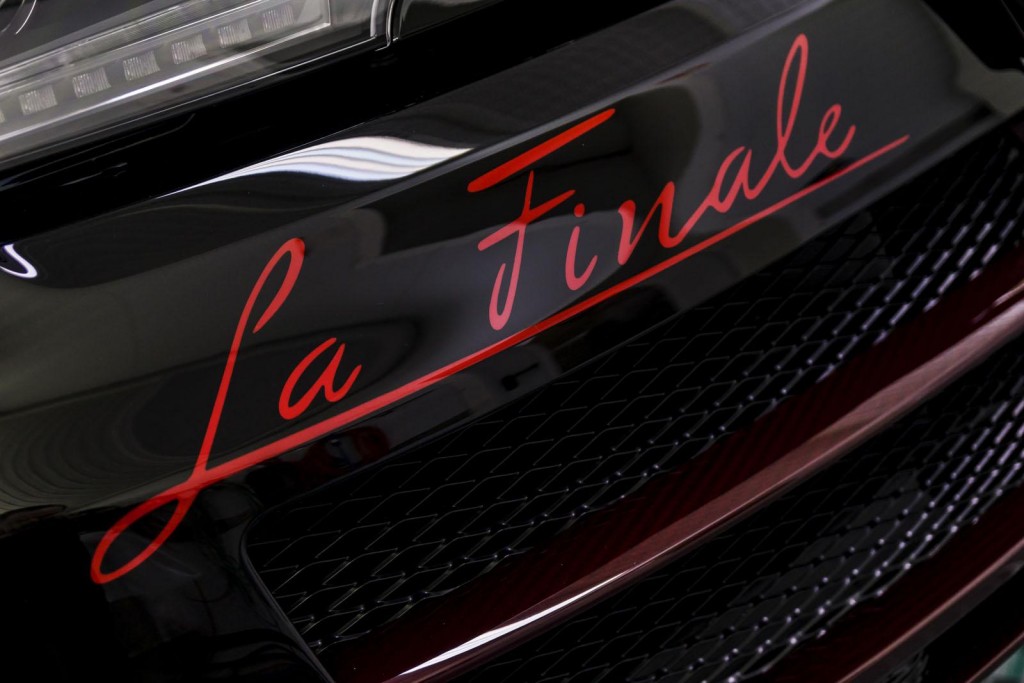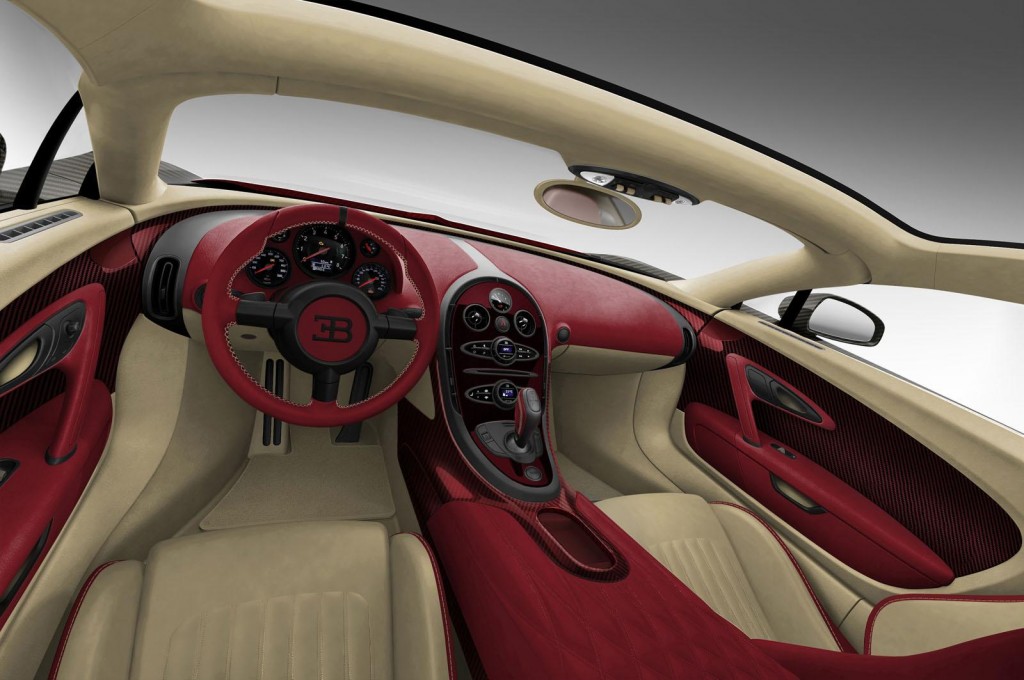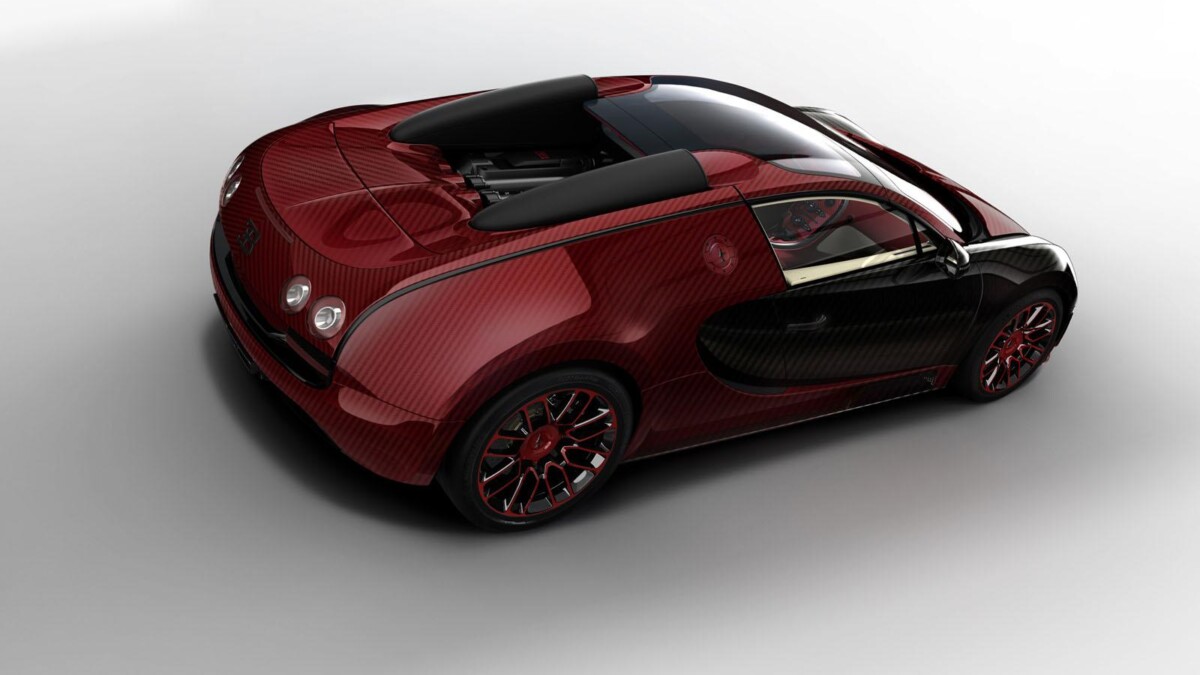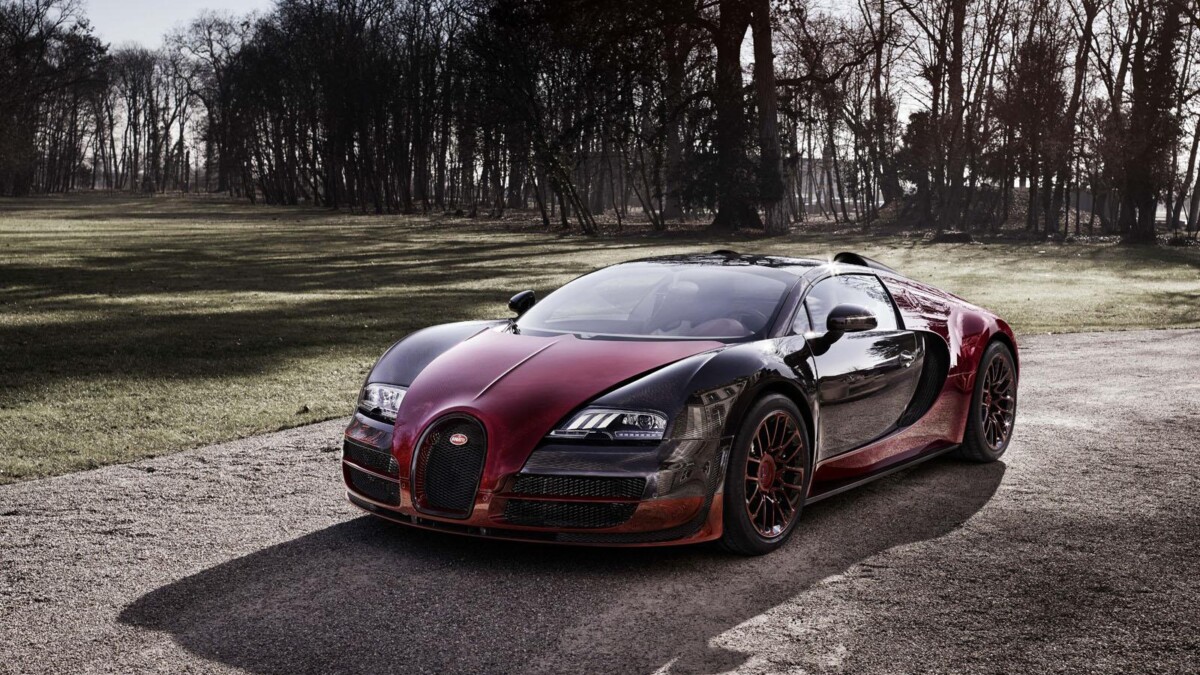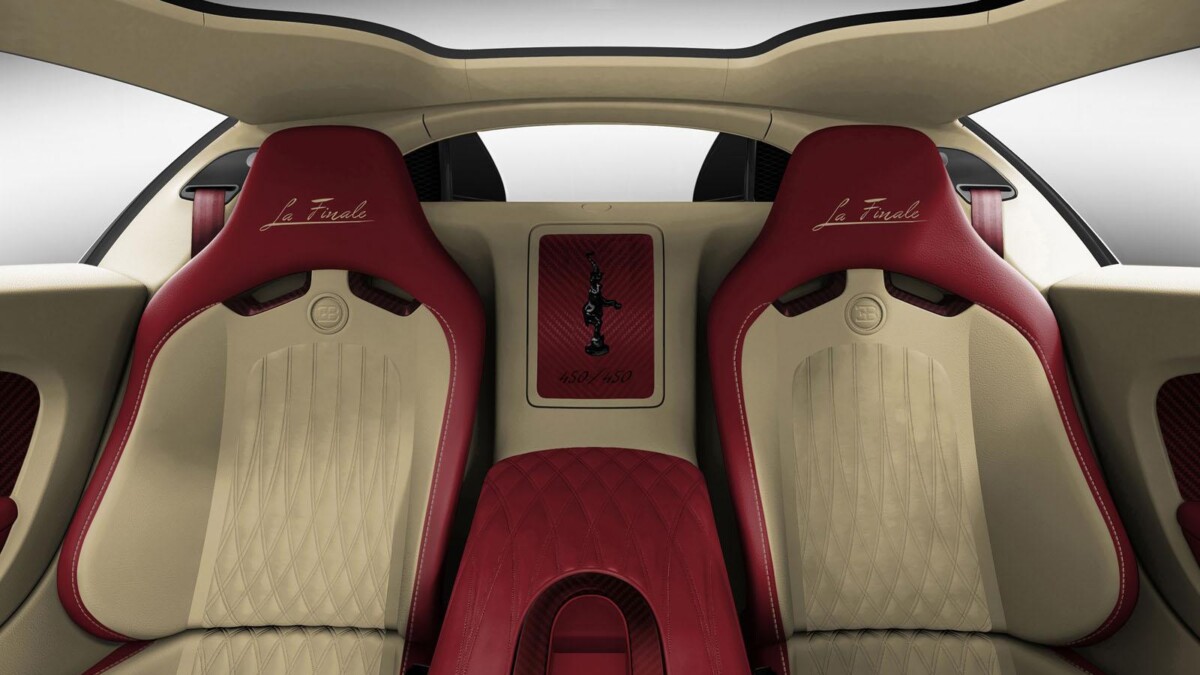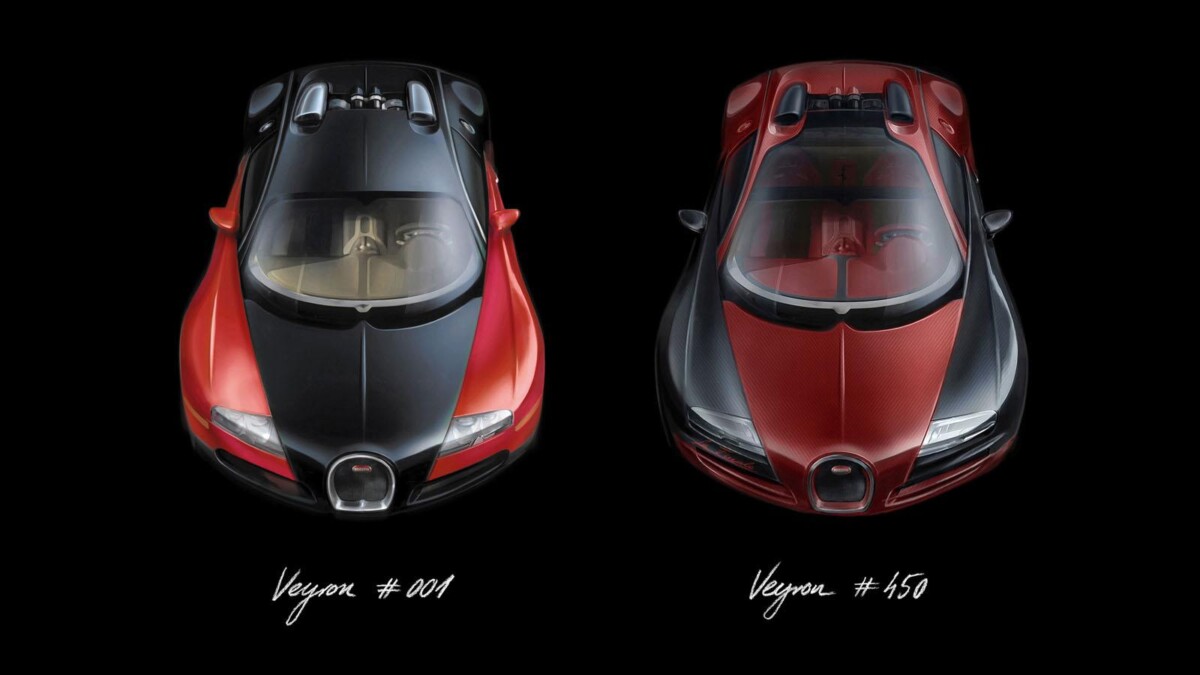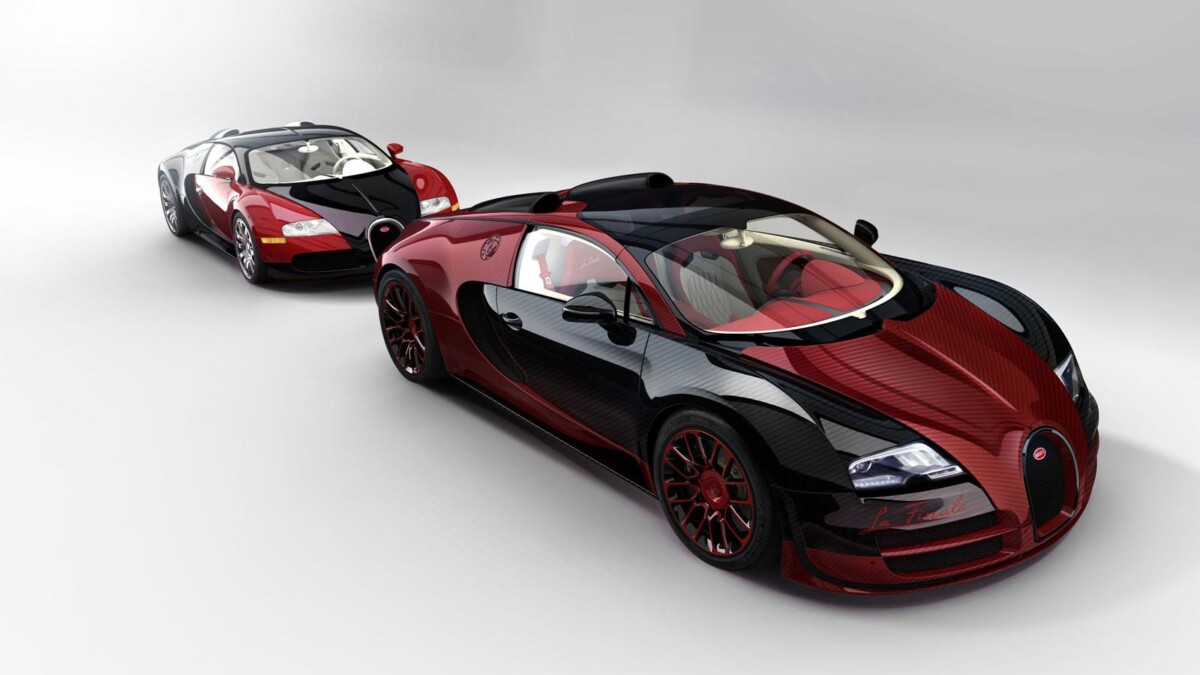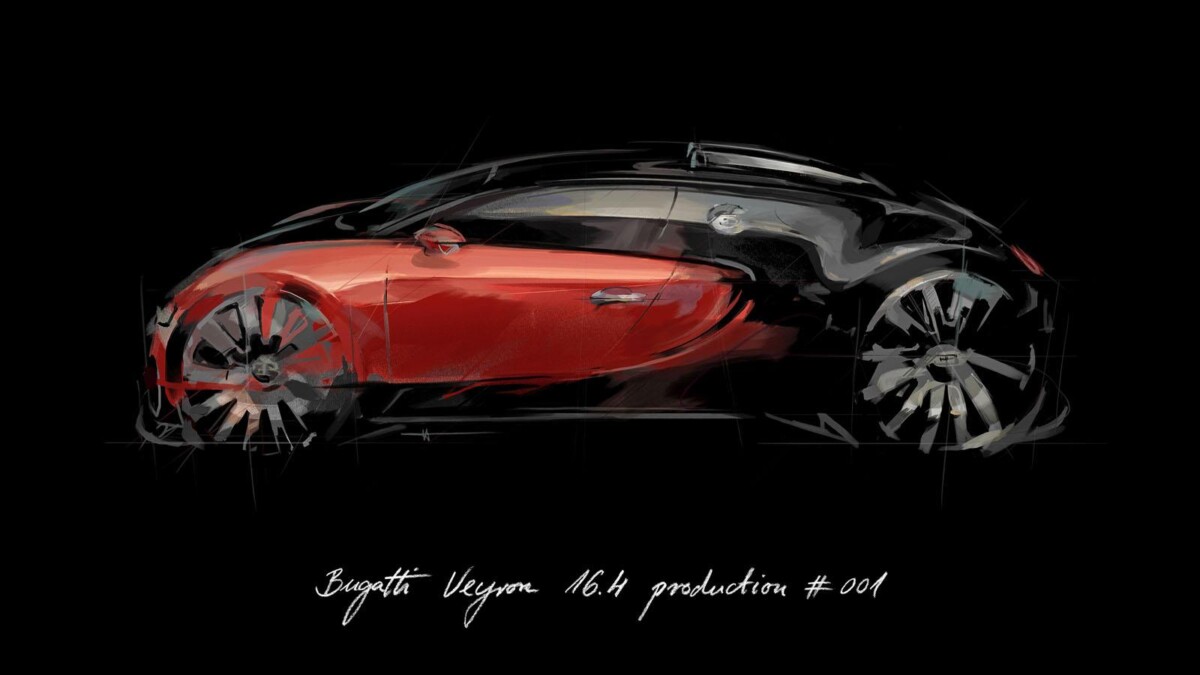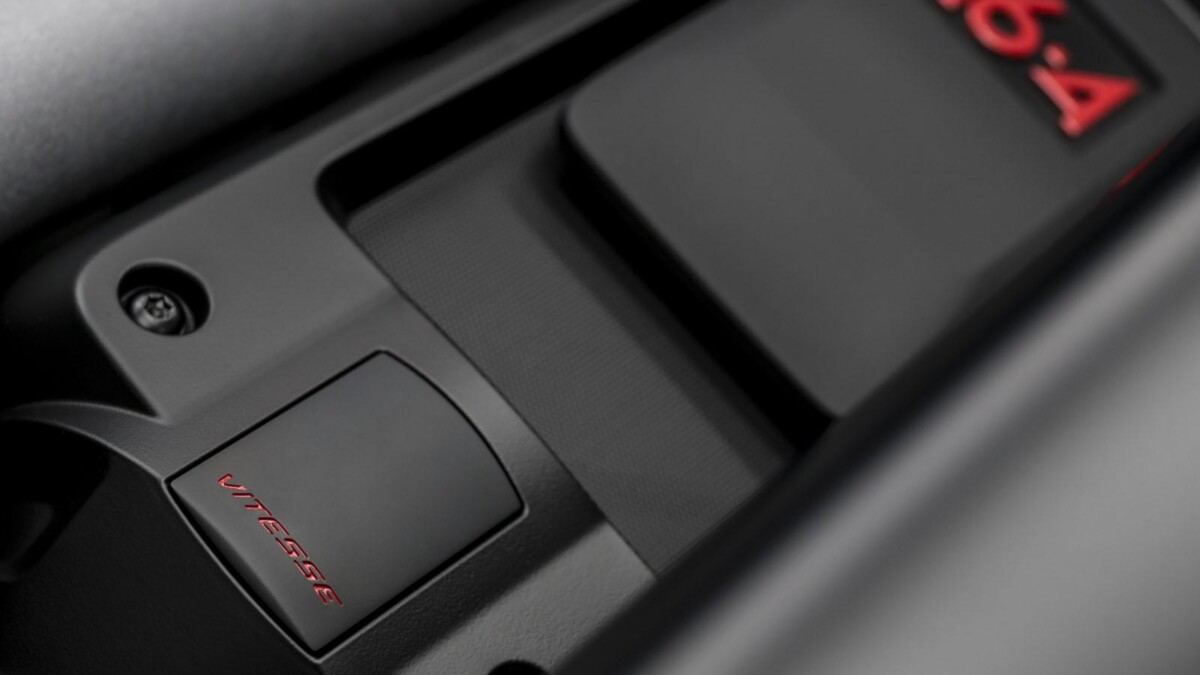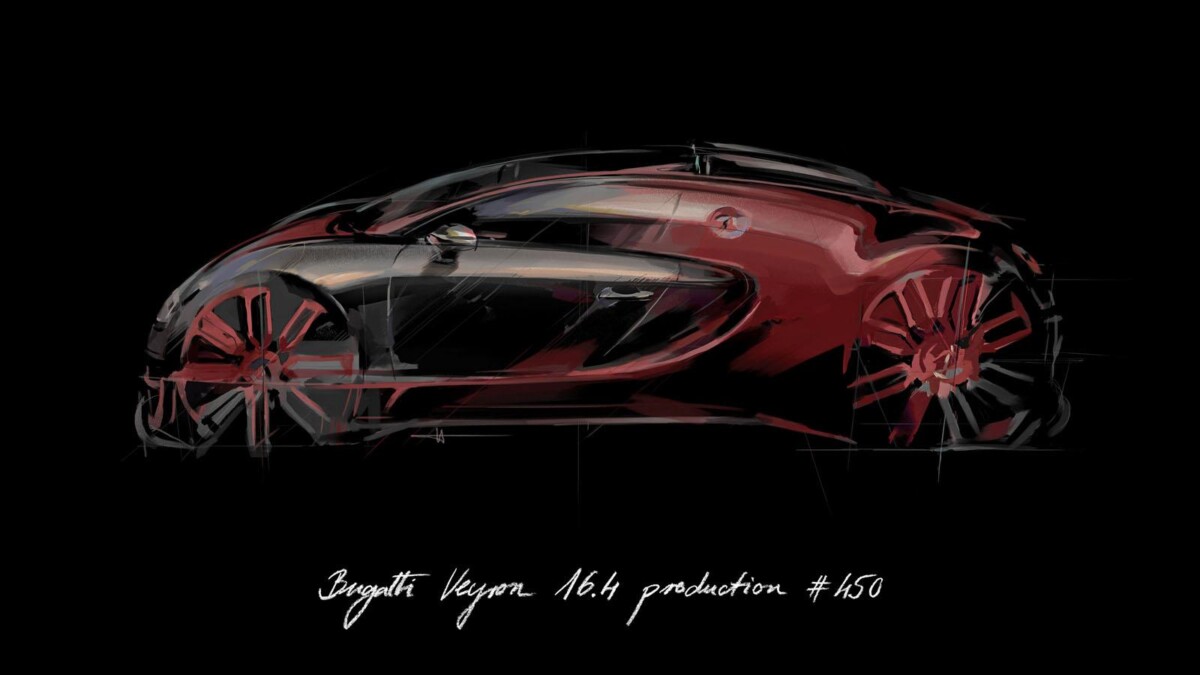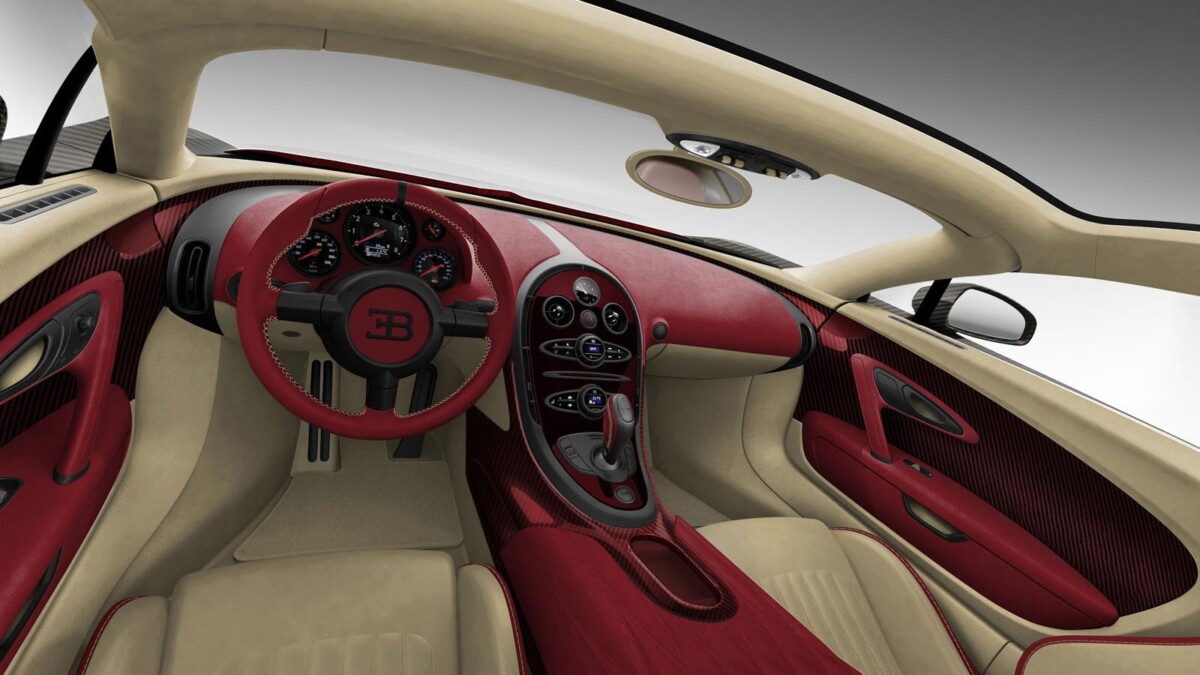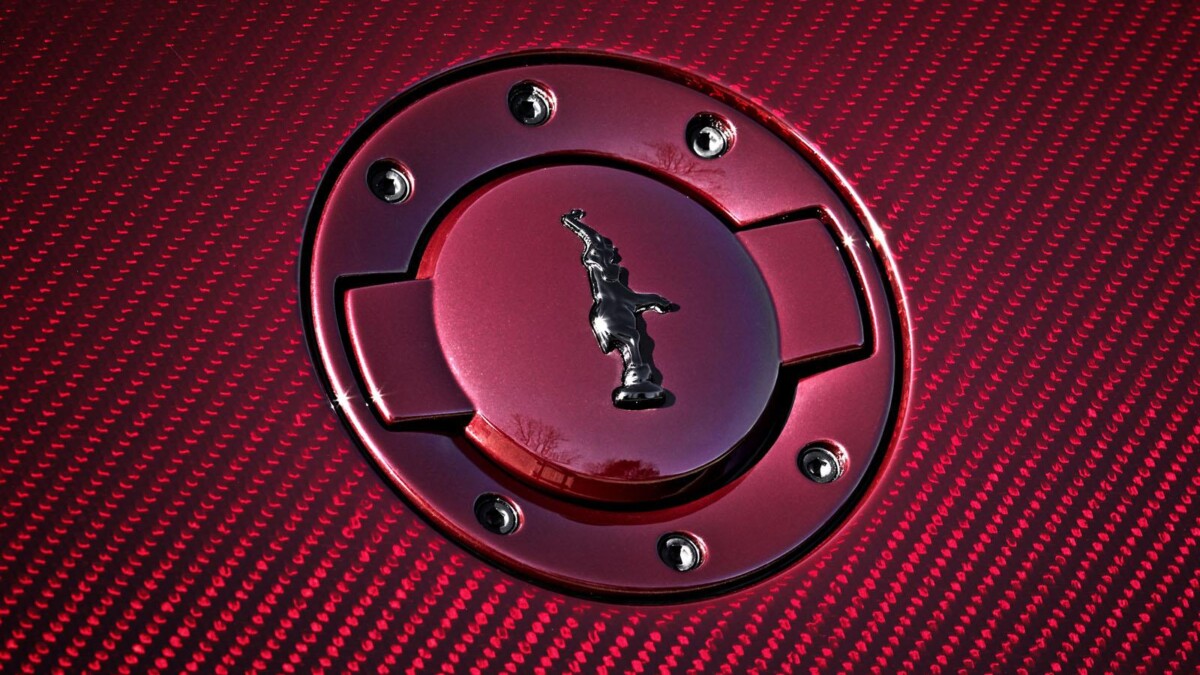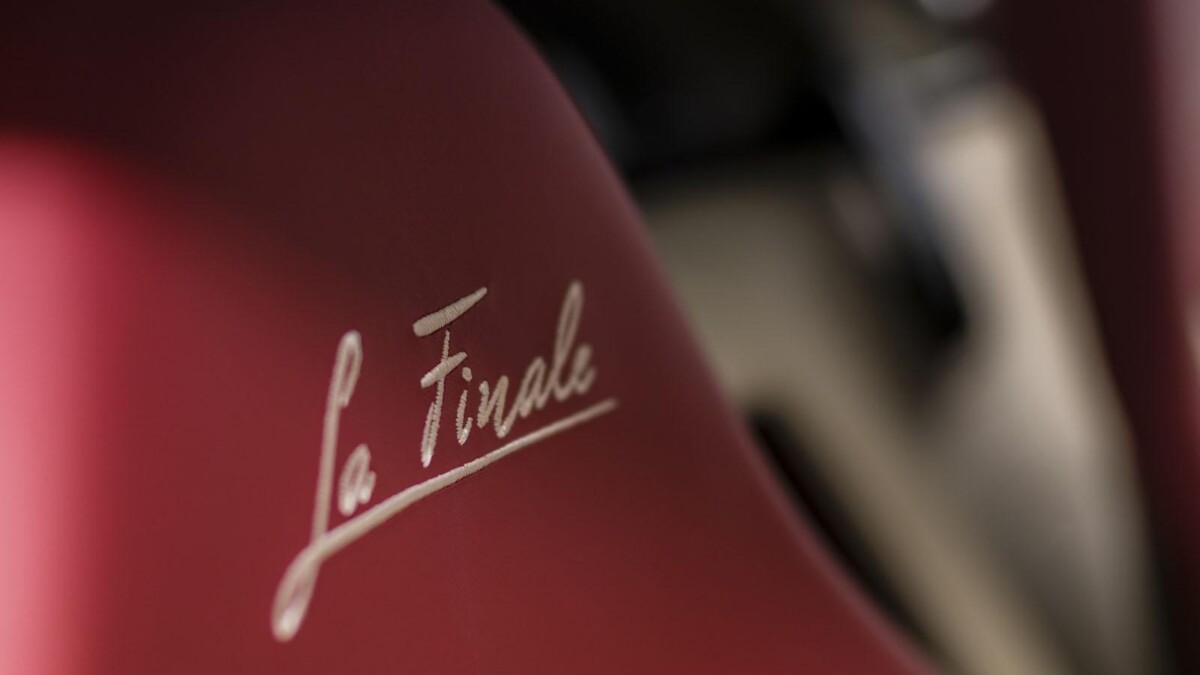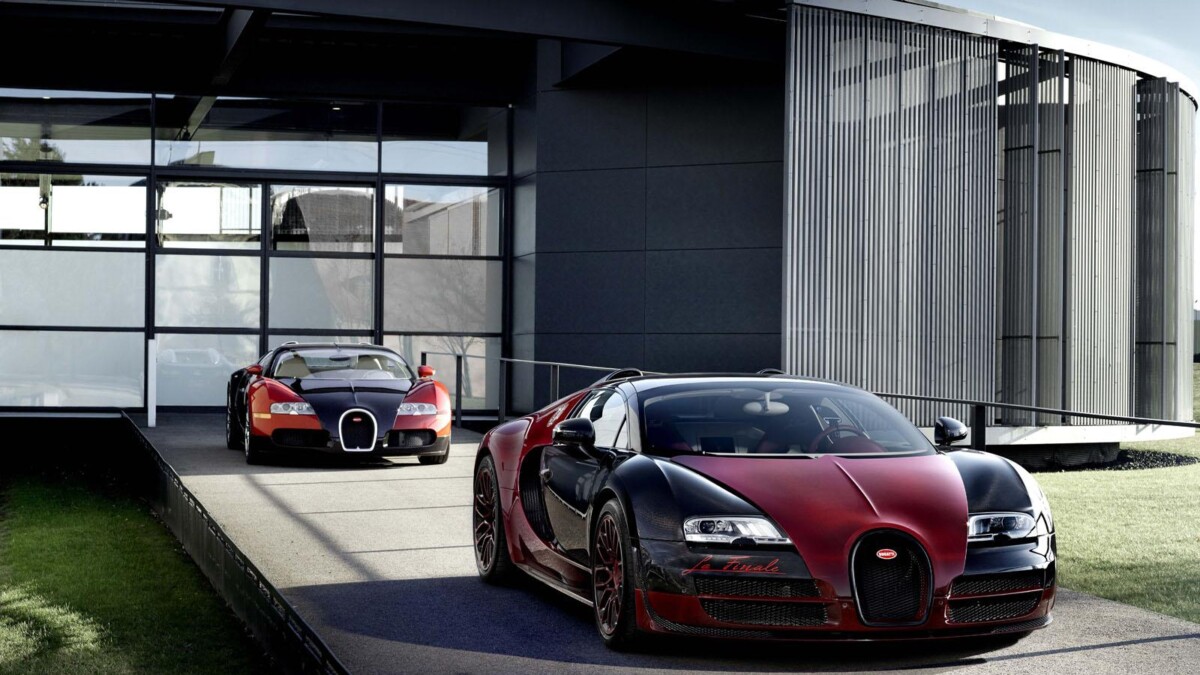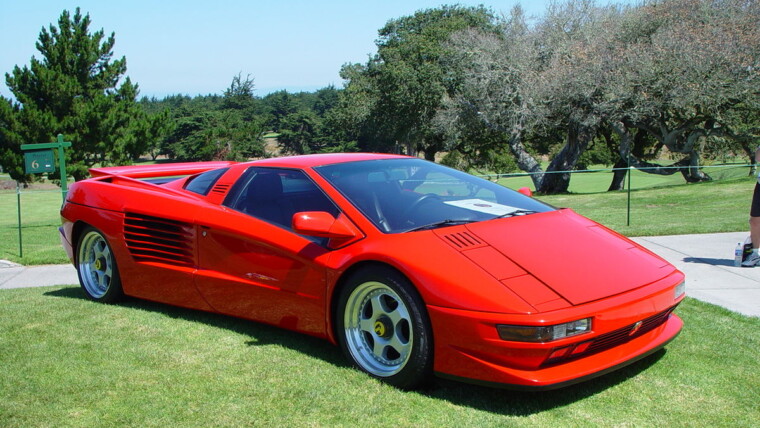At the on-going Geneva International Motor Show, Bugatti has unveiled the final Veyron with chassis number 450 alongside chassis number one of the Veyron 16.4 which rolled out of the company’s factory in Molsheim 10 years ago. As you all know, the Veyron is limited to 450 units, which have now all been sold, yep, including this one.
The last of the 450 Veyron supercars is dubbed the Veyron 16.4 Grand Sport Vitesse “La Finale”. It draws its sheer force from a 8-litre, W16 engine which provides a breathtaking maximum torque of 1,500 Nm and 1,200PS. It sprints from zero to 100 km/h in just 2.6 seconds and can achieve a top speed of 410 km/h.
“When designing the “La Finale”, the designers sought inspiration from the first Veyron in order to provide a visual conclusion to the success story of this super sports car,” says Bugatti’s chief designer Achim Anscheidt. “Although both vehicles have a black and red colour scheme, chassis numbers one and 450 still have their own individual character which we have identified visually. Ultimately, every Veyron is unique.” The owner of the Grand Sport Vitesse “La Finale” also had a say in the design of the vehicle.
The design of the carbon bodywork of “La Finale” is based on chassis number one which was designed 10 years ago in the traditional Bugatti two-tone colour scheme, which was popular in Bugatti models of the 1920s and 1930s. This striking design language remains inseparable from the Veyron to this day. For the “La Finale”, the front wing panels, the doors and the areas between the doors and the side air intakes, known as “medallions” in French, are made from black exposed carbon fibre. The other parts of the outer shell are made from red exposed carbon fibre, the first time this colour has ever been used on a vehicle.
Unusually for a Veyron, the name of the Grand Sport Vitesse has been incorporated into the outer shell. The “La Finale” lettering, which highlights the extra significance of this particular super sports car, appears twice: once very clearly under the right front headlight and then in a slightly concealed position on the underside of the rear wing. In both cases, the bright “Italian Red” lettering is painted into the black exposed carbon fibre.
For the first time in a Veyron, the air scoops and intercooler cover have been painted black. The EB logo and the relief “16.4” have also been emblazoned on it in Italian Red.
The wheel design is also in keeping with the red and black colour scheme. It is worth mentioning the hubcaps that were milled from a single block of aluminium – another example of the tremendous lengths that Bugatti goes to in the production of its vehicles. And that’s not all: each hubcap features a relief of the famous Bugatti elephant that was created during the milling process and then painted black. Rembrandt Bugatti, renowned sculptor and brother of company founder Ettore, designed this figure which was later used as a radiator cap on the Type 41 Royale and subsequently became a symbol of the brand. The elephant can also be found on the red fuel tank cover and oil cap as a black anodised insert made from milled aluminium.
As with the exterior, the interior of the “La Finale” also pays tribute to the first Veyron. It was upholstered entirely in leather in a light beige colour known as “Silk”. Leather also adds a refined touch to the interior of the “La Finale”, where it features in the centre seat panels, the footwell, the headliner, the cowling and the rear wall. Unlike chassis number one, the designers and the customer have settled on contrasting colours for chassis number 450, selecting a striking red tone known as “Hot Spur”. This red appears in the arm rests, the instrument panel, the dashboard, the side bolsters and on the steering wheel rim, which is also decorated with stitching in “Silk” beige.
Red exposed carbon fibre is also used in the interior: on the centre tunnel, on the inserts in the centre console, on the door panels and seat shells.
The red head restraints are adorned with “La Finale” lettering embroidered in “Silk” colour. The lettering is found again in “Italian Red” in the door sill strips, etched into the black exposed carbon fibre.
The jewel in the interior is undoubtedly the Bugatti elephant on the stowage compartment cover made from red exposed carbon fibre and located in the rear panel between the seats. The elephant was cast in bronze with great technical skill, given a black patina, and then worked into the cover as an insert. The lettering “450/450” has been painted in black under the bronze cast.
Other posts by AF Newsdesk

